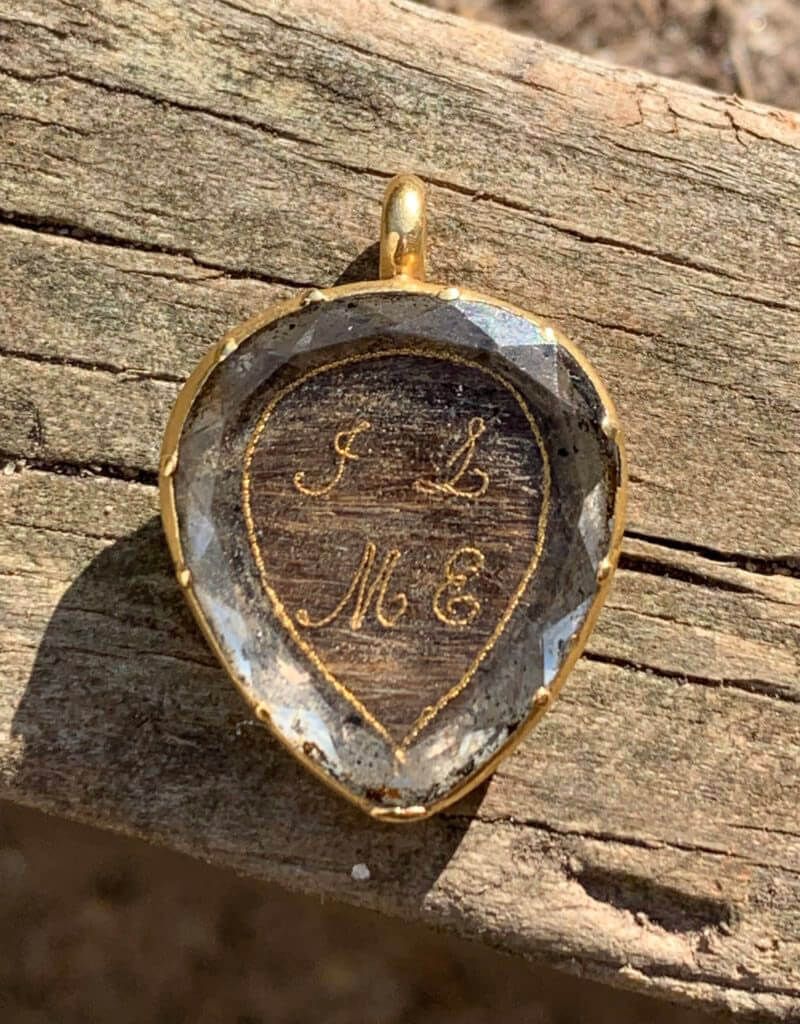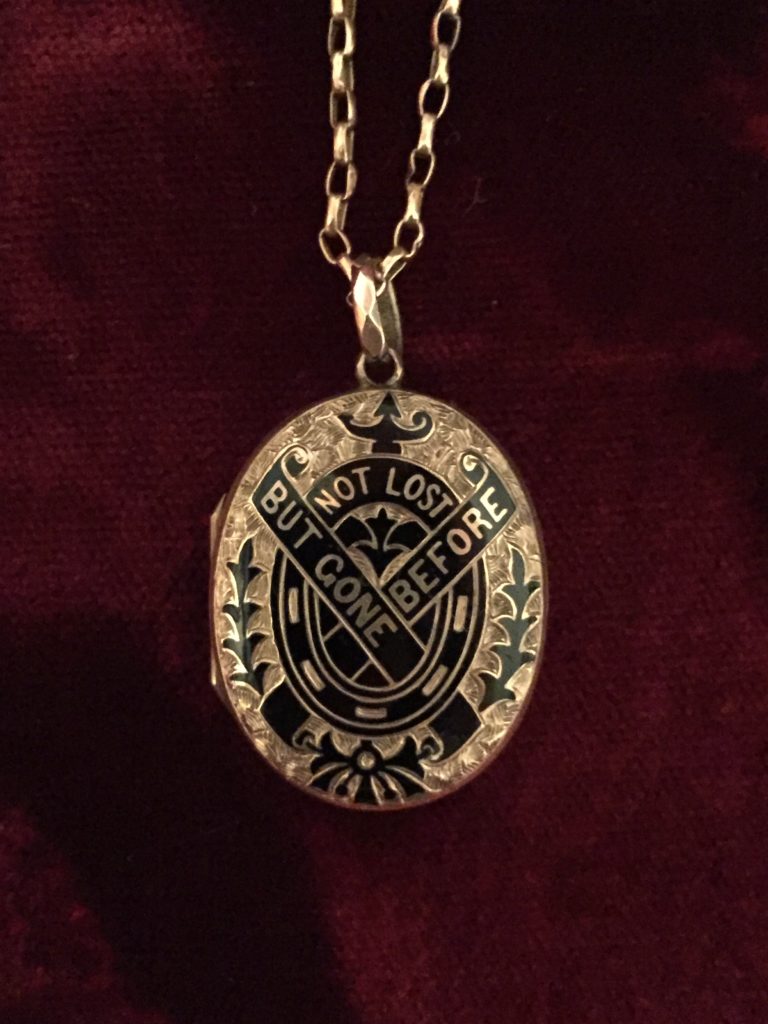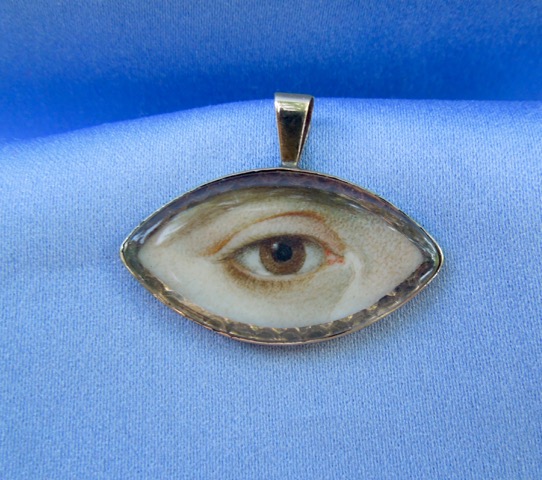Neoclassical Mourning Locket & Royalty, 1821
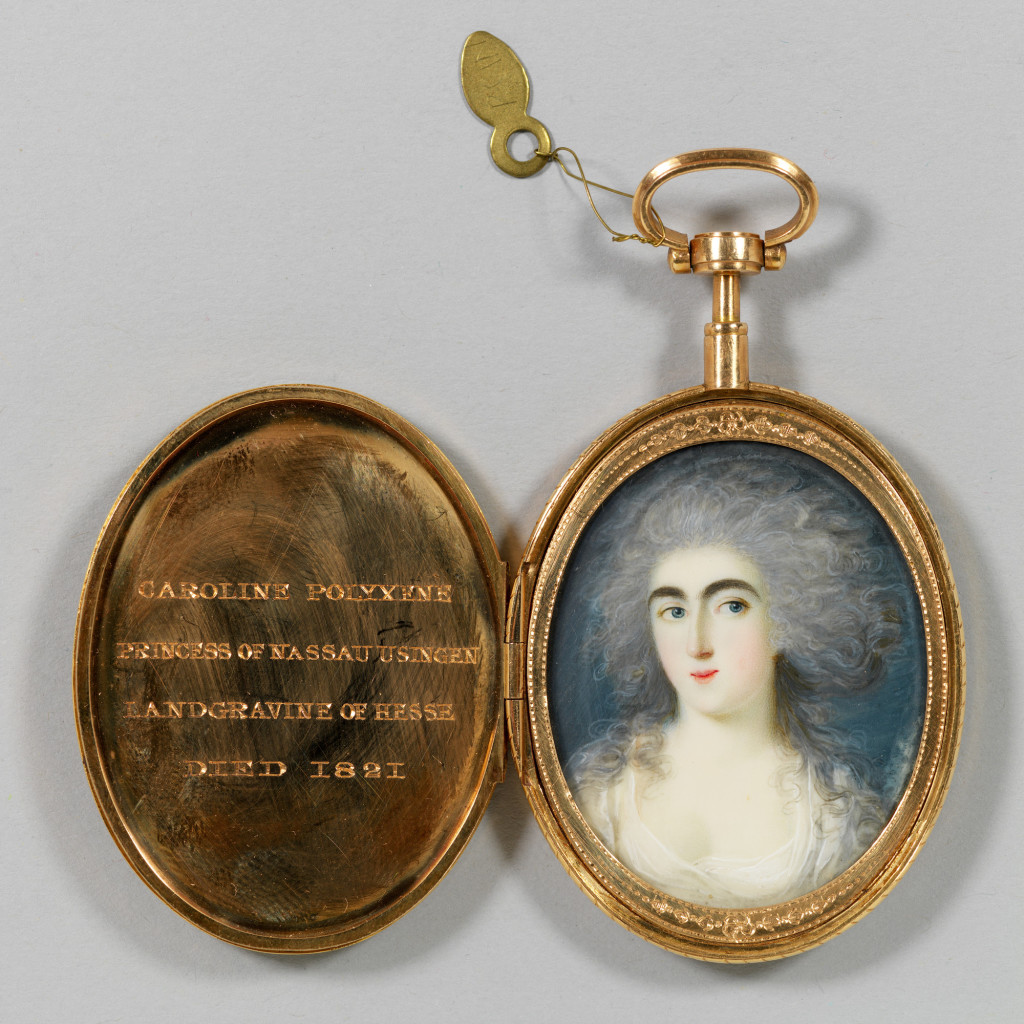
Having privilege in wealth is not required for mourning jewels, but it certainly helps. The range of quality in bespoke jewels is only limited by resource accessibility and wealth. For royalty, the quality tends to be of the highest level and these are the best jewels to identify for their specific time and age.
This oval gold locket contains a miniature of Caroline Polyxene, Landgravine of Hesse-Cassel-Rumpenheim. Upon the front of the locket is a cipher of CP surrounded by enamel forget-me-nots, showcasing a remarkable use of turquoise and green, colours which were not typical in mourning jewels for the time.
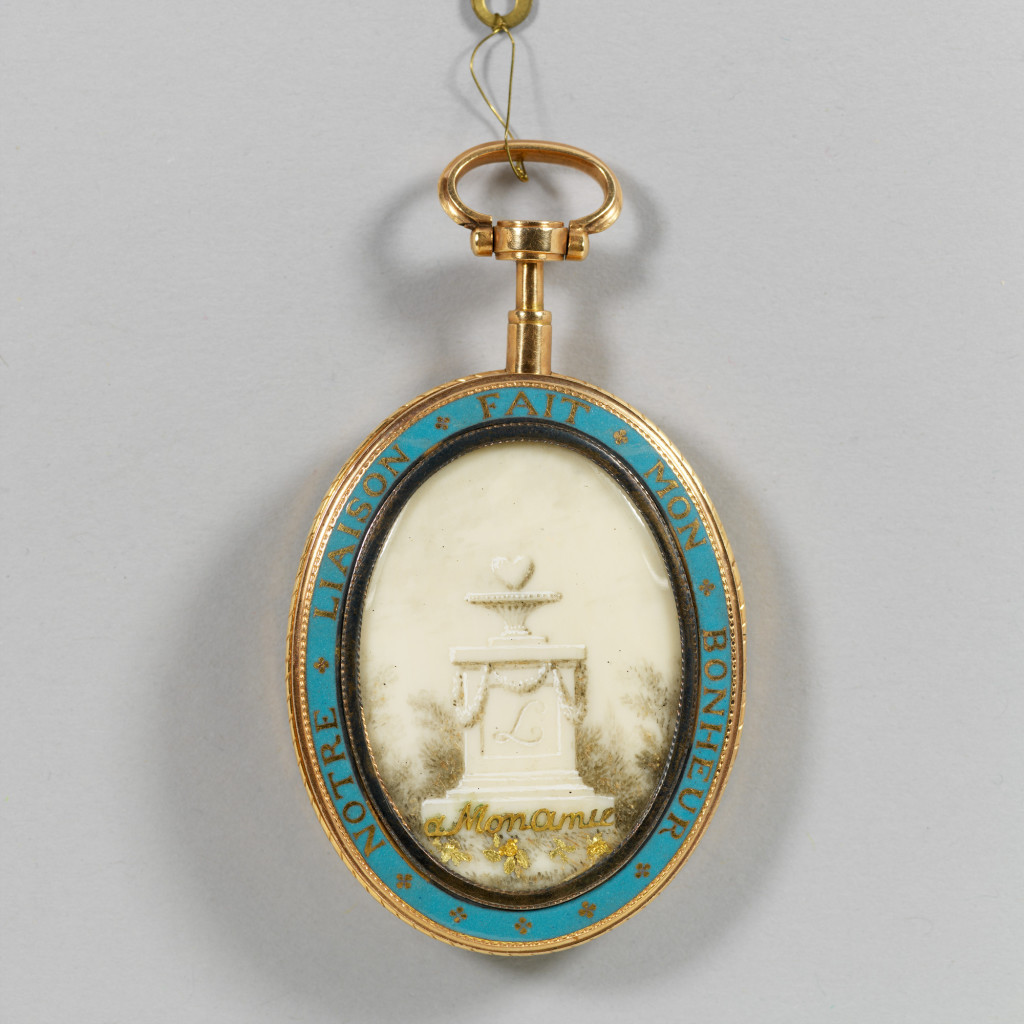
Upon the reverse, there is a sepia miniature of a marble cenotaph with the words ‘A Mon Amie’ in gold, enclosed in a pale blue enamel rim with the inscription ‘**NOTRE * LIAISON * FAIT * MON * BONHEUR **’ Neoclassical sentimentality is perfectly designed here; the balance of the painting is perfect, as is the subtle three-dimensional use of gold at the bottom of the scenario.
Dating from 1821, this locket features an early appearance of the one of the most popular styles of mourning and sentimental jewellery. Lockets would be quickly merged with the rise of photography in the latter half of the 19th century. Inside the locket is a bust-length miniature, facing half to the right; wearing a low-cut white dress; dark blue eyes, long powdered hair; dark grey background. On the opposite side to the miniature, the inscription: CAROLINE POLYXENE PRINCESS OF NASSAU USINGEN LANDGRAVINE OF HESSE DEIED 1821.
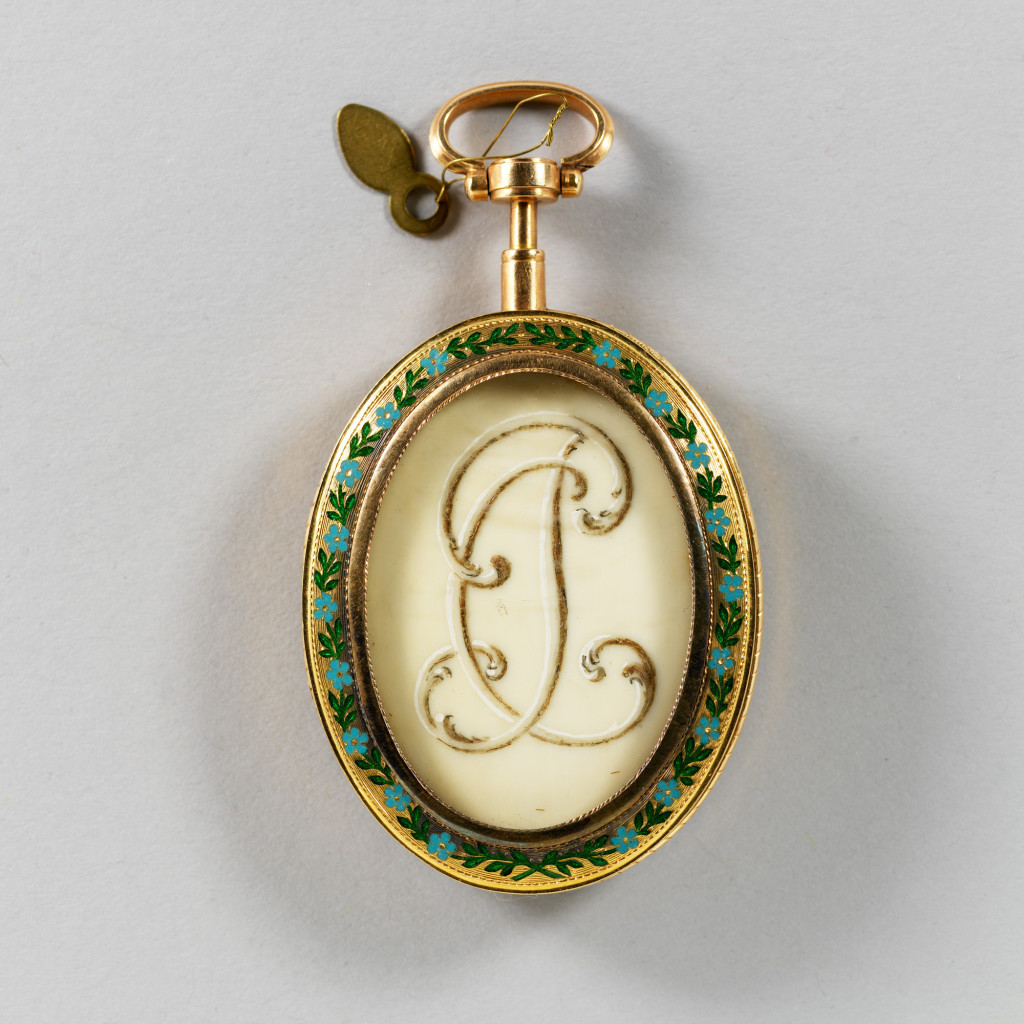
In terms of quality, this is the culmination of the Neoclassical style, depicted in the wealth that could afford a jewel of high distinction. The locket was given by the sitter to her daughter, Princess Augusta of Hesse-Kassel and inherited by her granddaughter Queen Mary in 1897, where it remains in the Royal Collection.




